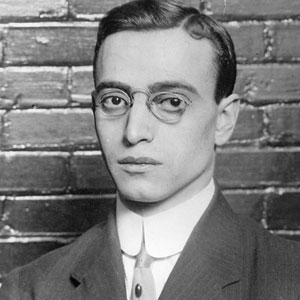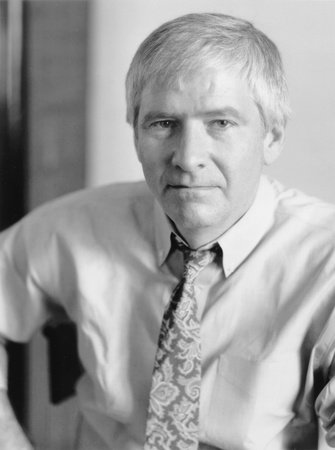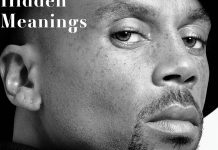
In the early hours of August 17, 1915, Leo Frank, former manager of Atlanta’s National Pencil Company, was hung to death from a tree in Frey’s Grove, just outside Marietta and near the former home of Mary Phagan, a 13-year-old National Pencil employee who had been murdered two years earlier. Frank had been found guilty of Phagan’s murder—and sentenced to death by hanging. The trial drew national attention fueled by a New York Times campaign claiming Frank’s innocence and counterattacks in the Jeffersonian, published by Georgia segregationist Tom Watson. Although the U.S. Supreme Court did not overturn Frank’s conviction, his sentence had been commuted to life imprisonment. It was from the state prison in Milledgeville that a group spirited Frank away and took it into their own hands to carry out the original sentence.

Steve Oney is the author of And The Dead Shall Rise: The Murder of Mary Phagan and the Lynching of Leo Frank, the definitive (742 pages; 17 years of research) account of the Frank case. Oney, who has written about this grim episode of civic history for Atlanta magazine in the past, will speak about the impact of the Frank case in a Georgia Historical Society event at the Strand Theatre in Marietta on August 13 at 8 p.m.
We chatted with Oney about the lingering resonance of the Frank case and parallels between the social and political climate of Georgia in 1915 compared to today.
A century later, why does this case resonate so strongly?
The lynching resonates 100 years after the fact for a couple of reasons. One, there was never a lynching like the Leo Frank lynching. He was abducted from the state prison without a shot being fired and transported in the dead of night from Milledgeville to Marietta by a circuitous route and hanged the next morning at dawn. And except for losing a night’s sleep, no one involved was inconvenienced.
So the magnitude was great. Leo Frank was most likely the most famous prisoner in America at the time, and the case had been on the front pages of the newspaper for almost a year, and the people who did this did so with impunity. This was not just an assault on the county jail. This was really an assault on the state of Georgia and really on the very notion of civilization. And they got away with it.
And you can never forget the influence on two of the most antithetical organizations of the early 20th century. It revived the Ku Klux Klan—which held its first cross burning on the top of Stone Mountain shortly after the Frank lynching—and the Anti-Defamation League, which while founded in 1913, didn’t really have a sense of purpose, and the Leo Frank lynching gave it a sense of purpose.
Finally, our times today are not that different than in 1915. People in 1915 were anxious about the shift from the agrarian to the industrial age. People are anxious today about the shift from the industrial to the information age. And maybe more so, people in 1915 lived in competing media echo chambers–were there were two versions of the truth. In 1915 it was the New York Times versus the Jeffersonian, Tom Watson’s paper, and today it’s the mainstream media versus at times the highly partisan blogosphere.
Circling back to the sheer audacity of the lynching: Nobody ever was charged. Your book clearly identifies members of the group behind it. How late is too late to prosecute?
You can’t prosecute the dead. In identifying and writing about them as carefully as I tried to–that’s as close as you can get to justice. They got away with it. It was a perfect crime. They got away with it in part because they scammed the system. They ran the coroner’s inquest, they ran the grand jury, and they essentially took over the state prison commission. There were no federal civil rights laws in 1915, there was barely an FBI; there was some precursor organization. Once a crime cleared a grand jury in whatever county it occurred in, it was done. Once Cobb County decided to indict no one in the lynching of Leo Frank, it was officially over.
It’s fascinating the way it was planned, the way that seven or eight leading citizens of Marietta put it together and delegated authority down the line and chose a group of lieutenants who actually ran the lynch party. The lieutenants chose the 20 or 30 guys who served as muscle. It was like the Raid on Entebbe; it was very well oiled machine.
As you note in the book and have discussed elsewhere—including a 2009 column for the Los Angeles Times—the Frank case was almost as much about class and economic inequality as racism and anti-Semitism. Do you see those themes playing out today in discussion about the symbolism of the Confederate flag and “heritage” versus fear of outsiders?
There is some of that. The Frank case was unusual in the South where race generally trumps class in these things. But the Frank case reversed that. The all-white jury was generally more sympathetic to Jim Conley, the state’s star black witness, than they were to the Cornell-educated defendant.
That’s one of the fascinating things about history. Who knows a hundred years from now what we accept as commonplace today will look strange? A hundred years ago, wealthy people in Atlanta thought that child labor was healthful for the child laborers, that it got them off the streets, that it provided an income, that it enhanced their lives. So someone like Mary Phagan, a 13-year-old who’d already been working a year or so in a factory, had no hope of going to high school—forget about college. She was a wage earner at age 13, and that was thought to be good.
Child labor was promoted by the Candlers, who owned the Coca-Cola Company, and really by the entire ruling class of Atlanta. But in the back of people’s minds, they knew it wasn’t good. That a crime like the murder of Mary Phagan at a child labor factory occurred, inflamed all of these usually unstated feelings.
Whether that could happen again, I don’t know. We are so distracted now as a nation. Even cases like Trayvon Martin, they have currency for a brief period and then they fade away. The Leo Frank case never faded away.
Is part of that due to the obvious fact that Leo Frank was white? In Georgia, 450 documented lynchings took place between the 1880s and 1930s—and 95 percent of the victims were black. Is part of the reason Frank was so famous because he was a white person?
I think that’s part of it. But the Frank case was different. Most lynchings happened almost simultaneously with the crime the victim was alleged to have committed. The Frank case took two years to play out. The Frank lynching was not a spontaneous outburst of mob hostility. It was a carefully orchestrated assault on the state prison by a number of powerful people who decided for a variety of reasons that they were going to lynch this guy. The reasons ranged from political to personal to anti-Semitism. A number of toxic influences dovetailed to concocting this outrageous plan.
It’s been more than 10 years since your book was released. What’s been the most consistent reaction? Has there been a reaction that surprised you?
Not yet. The people of Marietta were accepting of my presentation of the lynching. There has not been anyone yet to come forth to this day and say, “Dad didn’t do it,” or, “My granddad didn’t do it.” I thought there might be some pushback. That was one surprise.
The whole subject makes people uneasy. There are no winners in it; everything turns out wrong. Which is one of the reasons I’m interested in it. It defies expectations on a lot of levels. And as a consequence, the world of the South as it was in 1915 comes into complete relief.
For me, the Frank lynching is like a huge lightning bolt that lit up the skies of Georgia for a very brief period. During that time, things as they were stood in stark relief. Then the dark returned and life went on. That’s what drew me to writing the book: I saw the Frank case as a tool for illuminating the South from 1913 to 1915.
Is there a major point of the book that has been overlooked, or you don’t get asked about enough?
The state culpability in the Leo Frank lynching is a really big deal. I make the case in my book–it’s impossible to prove but I make a very strong case—that it was a state sponsored crime.
Prior to the Frank lynching, there was a typhus outbreak at the state prison. And the prison committee of the state legislature went down to Milledgeville to investigate. Suddenly the warden and the staff were on tenterhooks.
The prison committee was headed by John Tucker Dorsey of Marietta, and he was one of the planners of the lynching.
After the meeting between the committee and the prison officials, the typhus investigation went away and the legislature funded $30,000—which was a lot of money back then—for a new wing of the prison. I make the case in the book that this was a payoff for the warden and the others at the state prison to look the other way as the lynch party waltzed in—unopposed—and got Frank out of there without a shot being fired. They were gone within a half hour or maybe less.
To me that’s something that not enough attention has been paid to.
Also, I think Leo Frank was innocent, but there was some disturbing stuff. At least 10 girls—if you add up the coroner’s inquest and the trial testimony—testified to his so-called “bad character.” Were these all suggestible teenagers? Was it a case of mass hysteria like the Salem Witch Trials? Or was there something there? We’ll never know. But it’s bothersome.
It was only shortly after the Frank lynching that the KKK held a cross burning on Stone Mountain. This past weekend there was a Confederate flag rally at the mountain. As issues like this bring the South and Southern history back into the spotlight, has much changed in terms of media coverage of the South?
It’s somewhat the same. The Northern press coverage of the Frank case prior to the lynching really was overkill. Much of the coverage was biased—reporters didn’t even talk to the prosecutors or police—it was a foregone conclusion that Leo Frank was innocent. Today things are more complex.
But today there is a foregone conclusion from the outside that all Southern iconography is suspect. And I don’t think it is. The monuments of the South are not merely monuments to a corrupt and racist regime. They are about loss.
Hence, the easy assumption in press coverage today—that statuary should be taken down—reminds me a little of the easy assumptions made in covering the Frank case, that Leo Frank automatically was innocent when, in fact, there was a case against Leo Frank. It’s a subtle point to make.
Polarization is still there. The Frank case to me is ground zero for some of that.
It seems to me that the public in general equates the KKK with being anti-black and is less aware of its history of anti-Semitism. What’s your take on that?
A number of things went into the kickstarting of the modern Klan. In 1915, there was the Frank lynching and release of Birth of a Nation. A couple years later, when black troops came back after World War I, they’d had a taste of freedom in Europe and that was very threatening to people in the South.
I think most people think that the KKK was entirely anti-black. The revived KKK of 1915 was as anti-Semitic as racist. Here’s the thing, we’re talking about this and making the assumption that someone is interested in these topics, but most people in Atlanta don’t know about the Leo Frank lynching.
Sadly, I would have to agree. Having written about the 1906 Atlanta Race Riot, I would say people I encounter mostly have not heard about that episode—in which whites massacred blacks in downtown Atlanta—nor of the Frank case. And certainly they’re not aware of the history of lynching in Georgia in general.
Atlanta is always moving forward; it’s always rushing ahead. It always has been. That’s part of the city’s seal—Resurgens. It’s the notion of burying the past.










![The North Carolina Museum of Natural Sciences’ newest exhibit is a [pre]historic first](https://cdn2.atlantamagazine.com/wp-content/uploads/sites/4/2024/04/DD-3-100x70.jpg)


